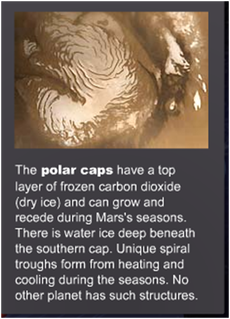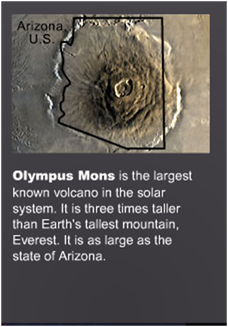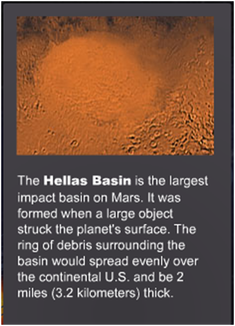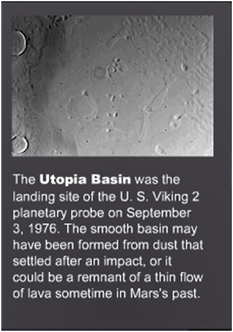Our Solar System
Mars Surface
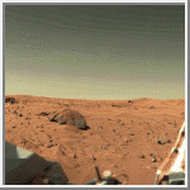
Big Joe, the large rock just left of center is about 2 meters (7 feet) wide. The top of the rock is covered with red soil. The exposed portions of the rock are similar in color to basaltic rocks on Earth. This rock may be a fragment of a lava flow that was later ejected by an impact crater. The red color of the rocks and soil is due to oxidized iron in the eroded material. In some areas of this scene rocky plains tend to dominate, while a short distance away drifts of regolith have formed
Mars Surface
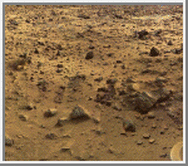
Viking Lander 2 used its sampler arm to dig these two trenches in the regolith. The shroud that protected the soil collector head during the lander's descent lies a short distance away. The lander's footpad is visible in the lower right corner of the image. The rounded rock in the center foreground is about 20 centimeters (8 inches) wide, while the angular rock farther back and to the right is about 1.5 meters (5 feet) across. The gently sloping troughs between the artificial trenches and the angular rock, which cut from the middle left to the lower right corner, are natural surface features.
